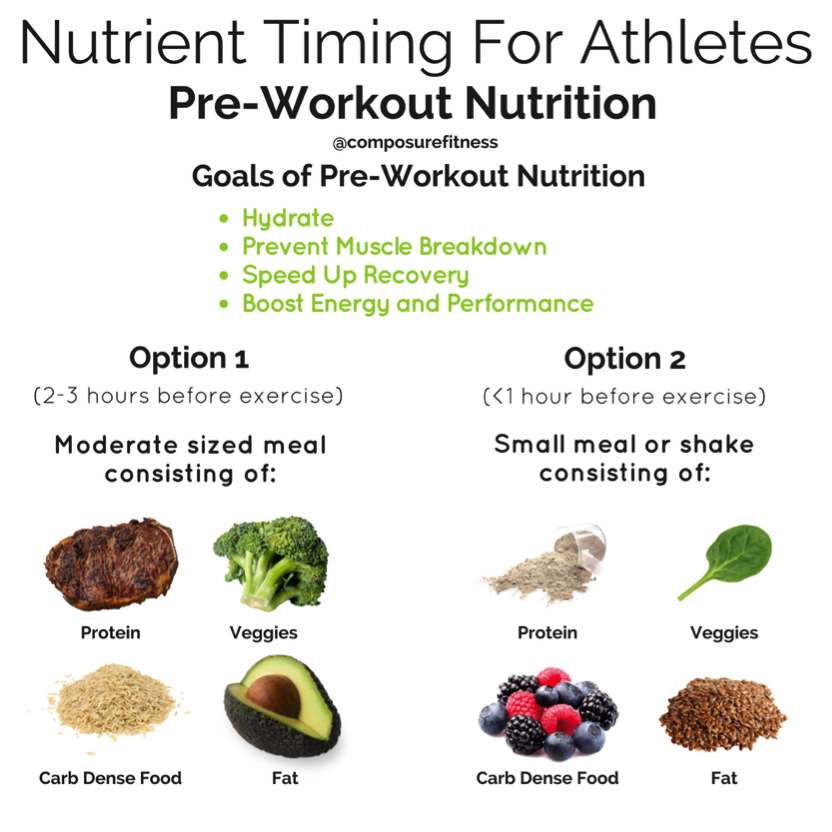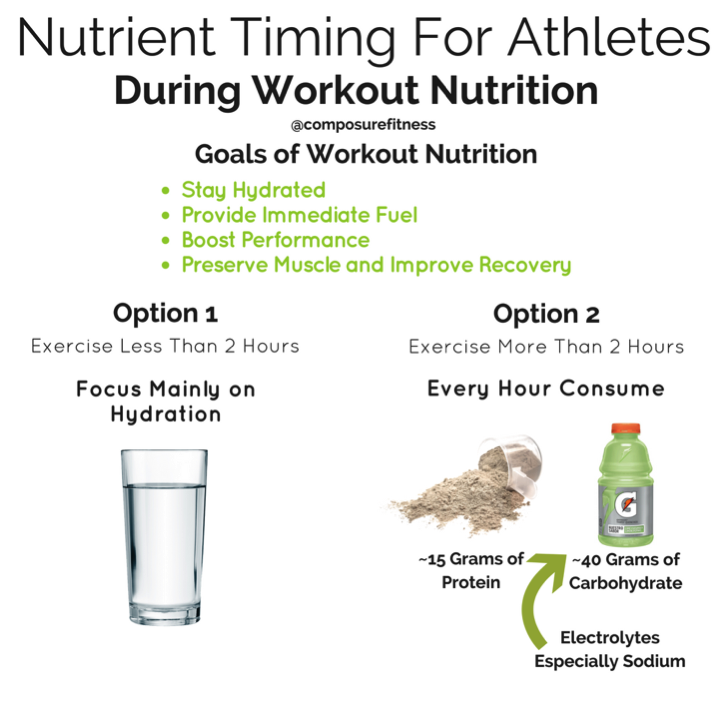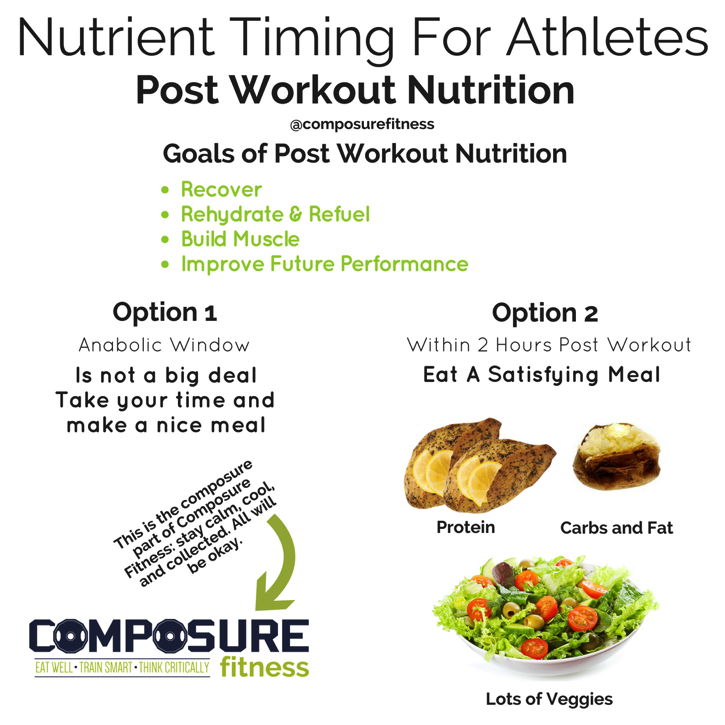There was a time in my life when what I ate (and when I ate it) ruled my clock. Now, granted, I wasn’t the guy bringing a cooler full of grilled chicken and asparagus to social gatherings, popping BCAA’s pills like candy, or injecting maltodextrin intravenously within 17 seconds of finishing my last set after a workout.
No, I didn’t take things to those extremes.
However I did place a lot of emphasis into my pre and post-workout nutrition, meticulously measuring my carbohydrate-to-protein ratios in an attempt to not turn into Christian Bale’s character from The Machinist.
Did it work? Sure.
Did it matter? Probably not.
In today’s guest post written by fitness trainer (and someone I hate because I am not nearly as handsome as he is), Michael Gregory, he explains how and why “nutrient timing” may not be as big of a deal as we’ve been led to believe.

Nutrient Timing Is Much Simpler Than You Think
Here’s all you need to know about timing your nutrient intake:
At some point in time, you need to eat food, or you will die.
“Nutrient timing” is one of those things people love to nerd out on. But the truth is, the timing of food consumption doesn’t matter if you aren’t already doing a whole host of other things perfectly first.
Before ever wondering WHEN you should be eating your protein or carbs, it’s important to understand the amount of time food takes to digest in your body. On average, a meal takes 6-12 hours to get to the colon, and up to 40+ hours to be fully digested.
With such a large window of time to play with, you may start to wonder how the timing of your meals affects your workouts. Essentially, if you eat anything within the six hours before your workout, it is somewhere in your system being actively absorbed while you are working out.
This is good news for the normal trainee. As long as you eat a meal comprised of adequate amounts of protein, carbohydrates, and fat sometime within the six hours before you workout, you will have fuel to support your training.
Why You Need Each Macro
Protein: Your body is literally built out of it. Stressors like exercise break the body down. This means that without a new supply of proteins running through your system, your body is breaking down and not repairing itself.
Carbohydrate: Carbs are what give us energy. Without them performance takes a nosedive. This is a fact. By fueling up with carbs for a workout, you elevate your work capacity and can make more gains in the gym.
Fat: Fats also give us energy, and our nervous system is composed of them. Fats make and balance our sex hormones and other crucial steroids that we need in order to function normally, they transport certain vitamins around our bodies that would otherwise just get excreted. With so many necessary functions for our bodies, fats are a vital part of our diets, and we certainly can’t perform optimally in the gym without them.
Regardless of current training status or experience, research has shown repeatedly that the number one most important dietary concern is total caloric intake with appropriate macronutrient ratios.
Just about everyone is deficient in some aspect of their diet, be it protein, fats, or some specific micronutrient.

If you are deficient in any aspect of your diet, nutritional timing will be a waste of your time.
The most common example of this I’ve seen are gym bros supplementing with protein pretty much constantly, but they haven’t touched a vegetable or a quality source of fat in a half decade. When your main food groups are protein, Red Bull, beer, and sugar it doesn’t matter when you drink that shaker cup of powder.
That’s the closest alligator to your boat. Shoot that dinosaur first.
But Wait; There’s A Catch
If you are 100% dedicated to hitting your nutrient targets and are trying to maximize gains, then you may fall into the very small portion of the population that can benefit from some nutrient timing-based practices.

Here are the categories of human in question:
- Endurance athletes who train multiple hours at a time
- Bodybuilders who train multiple hours and are trying to maximize body composition.
- Athletes in weight class-based sports who train multiple hours or multiple sessions and are trying to maximize body composition.
- Military athletes who train multiple hours or multiple sessions. (This often doesn’t get mentioned, but I come from that world and know what it’s like to cramp out in the middle of a 20 mile hike or watch someone slip into rhabdomyolysis.)
That’s four categories of 1%ers.
And this isn’t the rich kind. These are the apocalypse survivors: people who know what it means to accept struggle to accomplish a goal.
Again, notice that there are two major reasons that you would need to worry about nutrient timing strategies.
- If you are training multiple hours or multiple sessions in a day.
- If you are trying to maximize body composition.
Future Apocalypse Survivors
Congratulations, you are officially in the small pool of individuals who are ready to apply nutrient timing protocols to your workout schedule.
In three simple steps, here’s how it goes.
Step 1: Pre-Workout Nutrition
Consume a normal high protein meal with a solid source of starch or carbs, some good fat, and plenty of micronutrient-containing veggies 2-3 hours before your workout.
Protein before a workout, even hours before a workout, can help maintain and increase muscle size, reduce and prevent chronic muscle damage, and put plenty of amino acids in your bloodstream when your body is most apt to use them.
Carbs before your workout will fuel your training by putting glucose readily in your bloodstream and by topping off your muscle and liver glycogen stores. In addition, carbs stimulate insulin, which is good if you are consuming protein. Insulin prevents muscle protein breakdown and promotes muscle protein synthesis to help your muscles grow.
Fats, although they don’t seem to directly impact performance, do slow down digestion. This means you will have more energy longer because your body is slowly burning the fuel from the rest of your meal.
.
Bottom line: No need for fancy sports gels or drinks here!
Have a real whole food meal 2-3 hours before. You could also opt for an easier-to-digest shake with all the needed essentials.

Step 2: During-Workout Nutrition
Protein during a workout prevents muscles from breaking down and aids in quicker recovery. For people grinding out multiple hour runs or multiple workouts a day, this is imperative.
Carbs keep your energy substrate elevated during a workout. Once you deplete your glycogen stores, you need to refuel them to stay at a high level of performance for anaerobic activity. This is key if performance is a high priority for you.
Fats aren’t really necessary during training. Plus, they could hit your stomach like a ton of bricks. Stick to protein and carbs. Ensure you are getting your fats in your other meals of the day.
You’ll notice a sports drink here. The ONLY time you need one of these sugar bombs is when you are training like a maniac. Otherwise, it’s just destroying your teeth and body.

Step 3: Post-Workout Nutrition
A meal that looks pretty much just like your pre-workout meal is spot-on for post-workout nutrition, consumed within 2 hours after your workout.
Contrary to popular belief, you don’t have to throw a protein shake down your throat the minute you stop working out. Relax, go home, have a shower, cook a nice meal, and enjoy it.
You easily have up to 90 minutes, maybe even more, after a workout to get the nutrition your body requires.
Besides, the protein you ate before your workout is still peaking in your system. Having a full meal rather than a pure protein shake also helps slow down muscle protein synthesis, which is a good thing. It means your body will have more of a chance to get those amino acids from the protein to where they are needed most in your body.

Pre-workout and BCAAs
The bottom line on both of these is that they are unnecessary. In fact, I would go so far as to say that they are both a complete and total waste of your money.
There is little use for BCAAs, unless you are training fasted. But even then, whey protein is probably better.
Pre-workouts are one of the biggest scams in American History, right behind medical circumcisions. You would receive more pre-workout benefit from flushing your money down the toilet and then subsequently unclogging the toilet (plunging a toilet is a full body workout.) The only “pre-workout” that is worth the money in my book is caffeine.
Everything else is false positives and fancy marketing.
NOTE From TG: CAFFEINE!!!!!! Ahhhhhhhhh.
Nutrition Timing Is Actually Quite Simple
Chances are the time of the day in which you eat a certain food item is not what needs to be fixed in your diet.
Late night carbs, the anabolic window, butter coffee, second breakfast are means to an end if they work for you. Maybe you need help putting on weight or getting adequate protein, then these methods may help in various ways.
Only if you’re a hobbit trying to put on some mass.Just remember, your body is not some precise state of the art machine that will self-destruct if one microchip is a nanosecond out of time. Your body is the result of millions of years of evolution, in which there was no guarantee of a fresh Brontosaurus steak within 20 minutes of running from a pack of Velociraptors.
In 99.9% of clients I’ve personally worked with timing related eating tactics have functioned merely as methods to get people to eat more or less of certain foods, not because some eating protocol is actually optimal for your body.
About the Author
 Michael Gregory is a fitness professional and former U.S. Marine Captain who helps weekend warriors and fit pros get ready for their next challenge be that a fight, an intense military school, or beach season. You can find him in the real world on a wave in Bali or eating a cheesesteak in Philly. For more by Michael check out his Instagram @composurefitness, or his website www.composurefitness.com.
Michael Gregory is a fitness professional and former U.S. Marine Captain who helps weekend warriors and fit pros get ready for their next challenge be that a fight, an intense military school, or beach season. You can find him in the real world on a wave in Bali or eating a cheesesteak in Philly. For more by Michael check out his Instagram @composurefitness, or his website www.composurefitness.com.



